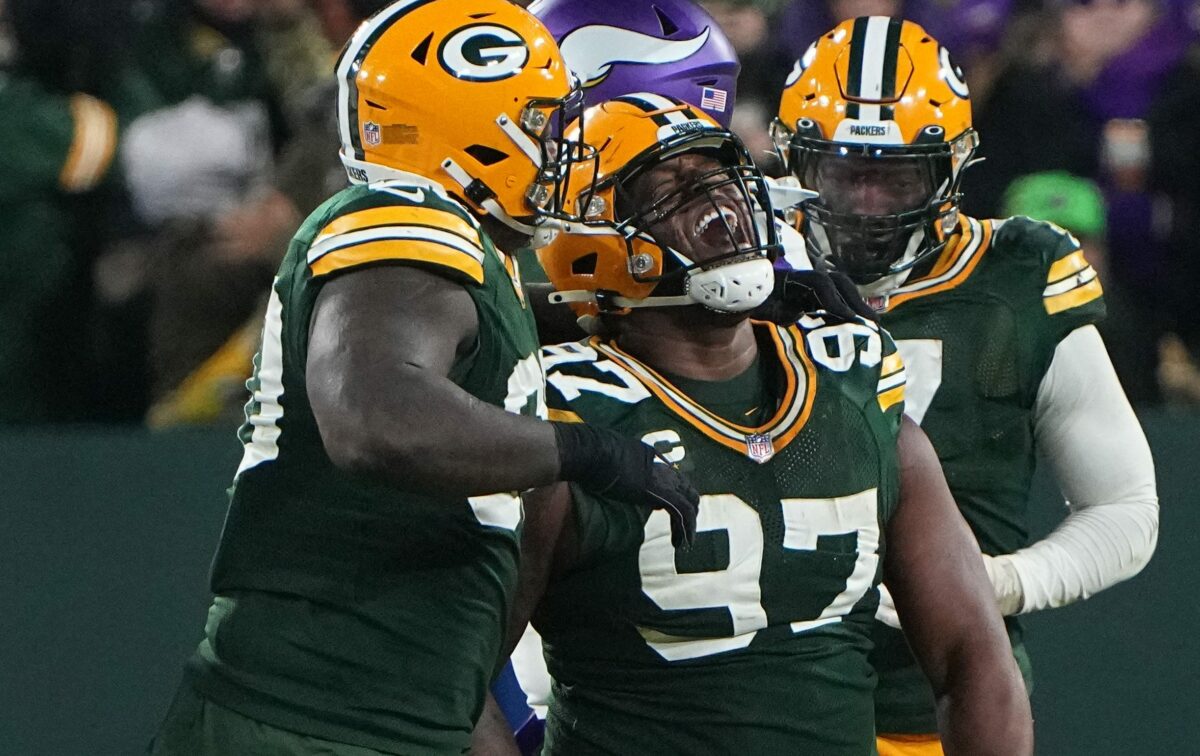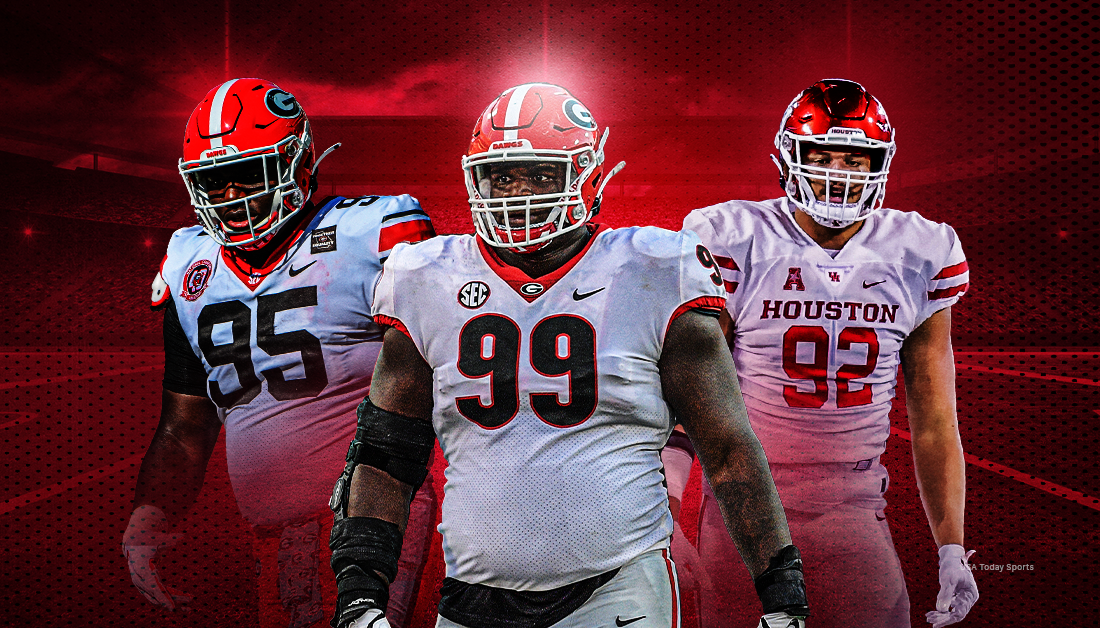The Green Bay Packers just selected Devonte Wyatt in the first round of the 2022 draft. They also still have Kenny Clark, one of the best interior defensive linemen in football. However, adding another defensive tackle should be a priority this offseason.
There are two main reasons for saying this. One is that they need the bodies. Both Jarran Reed and Dean Lowry are hitting free agency and may not return. The second reason is that for much of the season, this group was underwhelming, but when playing well down the stretch, it had an immense impact on the defensive side of the ball.
Overall, the Packers struggled to generate any sort of consistent pressure from the interior pass rush. Basically, it was dependent upon how Clark played. Green Bay also ranked 28th in yards per rush allowed and 31st in run defense by DVOA.
But during the Packers final five games, we saw improved play up front, and not coincidentally, the defense as a whole looked a lot better. Pressure on the quarterback was much more consistent, with Kenny Clark, Jarran Reed, and Devonte Wyatt all ranking within the top 35 out of 120 eligible interior defensive linemen in PFF’s pass rush productivity metric from Weeks 14 through 18.
[lawrence-related id=89561]
Against the run during that same span, Green Bay didn’t allow any running backs to combine for 100 yards, and they held them as a collective group over those five games to 4.4 yards per carry, which for some context, would have ranked 15th in the NFL compared to where the Packers finished at 28th, allowing five yards per attempt.
Having a more stout run defense allowed the Packers’ secondary to play more Cover-2 and Cover-6, both of which are designed to limit the opponent’s ability through the air. It also makes the defense susceptible against the run, but because Green Bay’s front seven was able to not only hold up but play their best football, it gave them the flexibility to utilize these coverages, which helped limit the production of players like Tyreek Hill, Jaylen Waddle, and Justin Jefferson.
So as we look ahead to 2023 and wonder how this defense can improve after a disappointing season, it begins with the play in the trenches. Truly the entire defense benefits when there is a regular push from the interior defensive line. It can provide more freedom with coverages, slowing the opponent’s run game can lead to them becoming one-dimensional and more predictable, while pressure on the quarterback is always the best way to wreck any passing play.
As far as free agency goes, the Packers, once again, aren’t going to have much spending power, which means the draft may end up being their best avenue when it comes to finding an impact player. I’m also not suggesting that the Packers absolutely have to spend their 15th overall pick on the position, although that wouldn’t hurt, but an early-round investment could go a long way for this defense.
This addition could also benefit Clark by providing him with a few additional snaps off each week, which doesn’t sound like much, but over the course of a season, that adds up. Clark, again, had one of the higher snap totals among defensive linemen in 2022. Given the makeup of the room over the last few seasons, this hasn’t been a luxury that the Packers have had. As already mentioned, Clark is one of the best, but some consistent help shouldering the workload isn’t a bad thing.
Our very own Brennen Rupp lists Clemson’s Bryan Bresee as an option at pick 15. He also adds that Lukas Van Ness from Iowa is more of an edge rusher, but has the versatility to move around the defensive front. In Round 2, Rupp mentions Siaka Ika (Baylor), Gervon Dexter (Florida), Mazi Smith (Michigan), Karl Brooks (Bowling Green), Keeanu Benton (Wisconsin), Keion White (Georgia Tech), as potential targets.
Hopefully, internal improvement with Wyatt moving into Year 2 and TJ Slaton moving into Year 3 will help this room improve and find more consistency. But for a heavily rotated position, adding more impactful depth should be on Brian Gutekunst’s to-do list because, as we saw, the impact can be felt throughout the defense.
[mm-video type=playlist id=01eqbxb1xg7g19wqdc player_id=01eqbvhghtkmz2182d image=]
[listicle id=89629]







